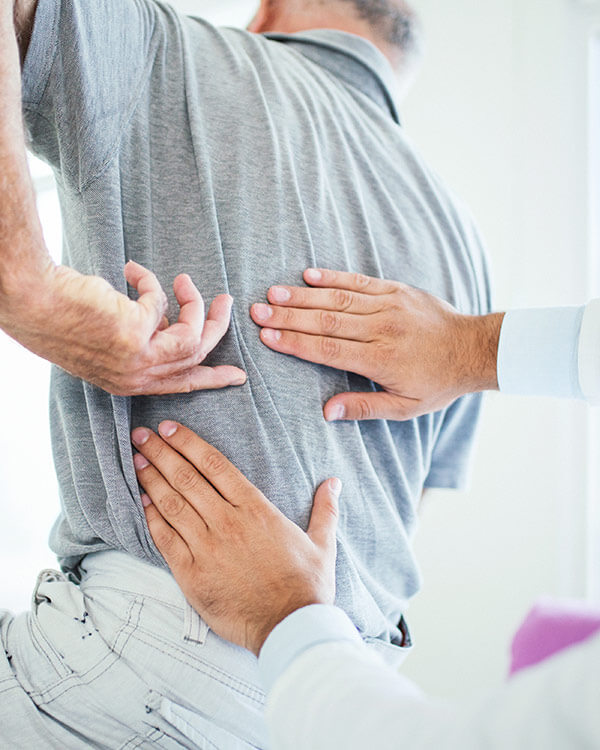Low Back Pain
Request Appointment
Treating Low Back Pain in North Dallas
Lower back pain is a very common problem. It’s been determined that 20% of Americans have reported back pain each year, with men and women experiencing it equally and at any age. The first episodes commonly occur between 20 and 40 years of age, and it frequently results in consulting with a spine surgeon. Back pain can be caused by mechanical issues or the natural aging process, with a minor number of incidents resulting from a serious illness. Natural degeneration (osteoarthritis) or aging commonly cause lower back pain, as well as muscle strain, herniated discs, fractures, and other mechanical issues. In rare cases, a serious cause like cancer, vascular problems, nerve tissue damage, or an infection can be the source. Risk factors for back pain include tobacco, drugs, alcohol, poor diet, and lack of exercise. It’s important to attempt to prevent back pain by modifying or avoiding risk factors. Limit twisting, bending, heavy lifting, and other repetitive motions, and seek treatment for obesity and depression. If you suffer from any back or spine pain, give us a call to set up an appointment.

Symptoms of Low Back Pain
The lower back is the most typical location of back pain, but the upper back is also susceptible. Movement can intensify back pain, and it can radiate into your legs and other extremities. Back pain can also limit your range of motion, or it can be tender or sore when you touch it.
Diagnosing Your Condition
A doctor will conduct a physical examination and collect a comprehensive history to diagnose low back pain. With this diagnosis, we can start a treatment process. A full neurological review identifies issues such as compressed nerves that stem from a herniated disc. We use supplemental imaging for cases where symptoms continue after treating it for several weeks, or if we have reason to suspect there’s a serious pathological issue. For example, if we suspect a bone infection or tumor, we will order X-rays. If we suspect a herniated disc, we’ll perform a CT scan or MRI. Red flags we watch for include weight loss, tingling or numbness, bladder or bowel control issues, fever, and weakness, as they can indicate that you have a more serious back condition.
Low Back Pain Treatment Options for Relief
Low back pain treatment has the same goal as any pain treatment: to improve function and relieve pain. We utilize treatment methods that range from non-surgical and conservative treatments up to surgical procedures. If non-surgical treatments prove ineffective, the doctor may inject opiates, steroids, or local anesthetics at the site of pain to prevent pain signals from reaching your brain. Disc herniation pain might require either discectomy or spinal fusion, which are two forms of spinal surgery. It’s common for back pain to resolve itself with non-surgical treatment in a matter of weeks. Some forms of non-surgical treatment include:
- Physical therapy and exercise to help strengthen your core and back, which can quicken recovery and avoid a recurrence.
- Lifestyle adjustments that avoid aggravating motions and reduce your body mass.
- Yoga, massage, acupuncture, and other naturopathic therapies.
- Intervention pain treatments, which can include epidural steroid injections and spinal cord stimulation.
- Acetaminophen, ibuprofen, muscle relaxants, and other over-the-counter medications for pain relief, as well as prescription pain-relief medications.
Give Us a Call Today
Get the best possible treatment for your low back pain by coming to Dr. Jones-Quaidoo at Spine Vue. Give us a call to schedule an appointment, and we’ll make sure your pain and discomfort get resolved.
